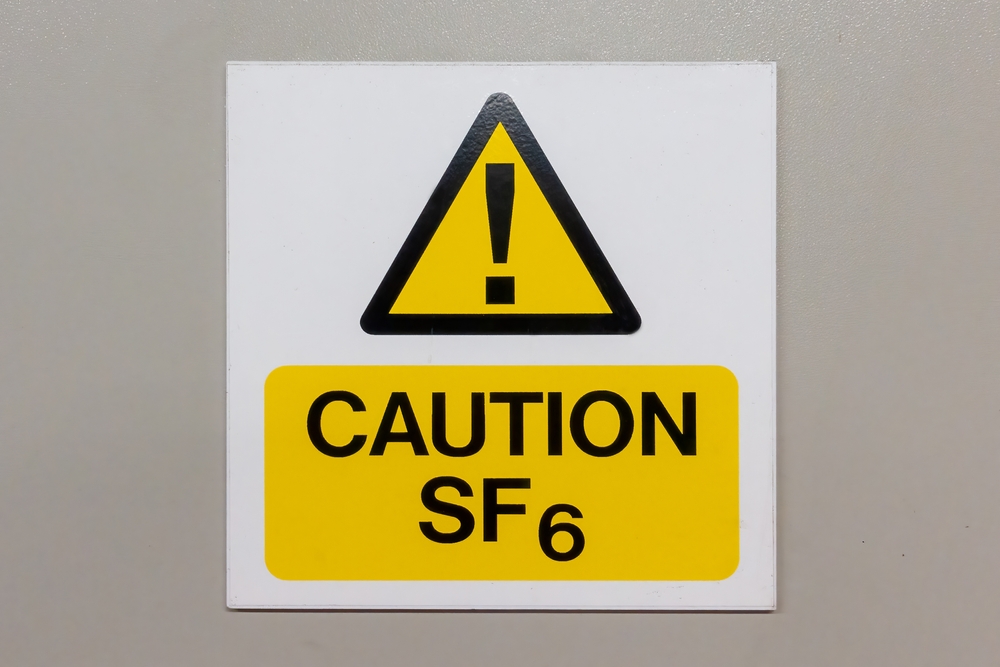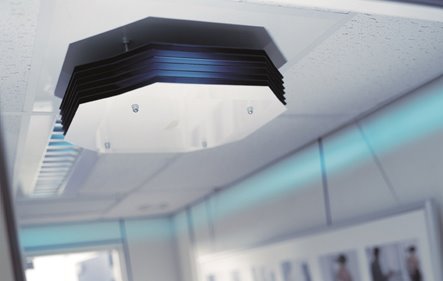Building smarter: automated lighting controls
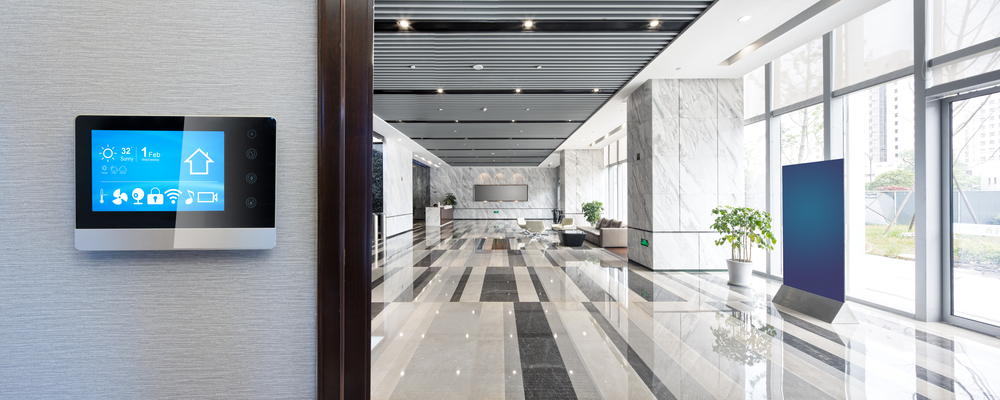
Demand for smarter buildings is expected to skyrocket as businesses get back to work in coming months. Here, we look at the best ways for installers to master smart lighting installations and help clients meet their energy efficiency goals…
Smart incentives
If there were ever a silver lining to the coronavirus crisis, it is the renewed drive from all areas of industry and government to recover from the pandemic as a greener, more energy-efficient society.
Add to that the recent advances in green technology and climate change legislation such as the Net Zero Carbon 2050 target, and energy efficiency becomes a no-brainer for clients looking to build greener, cleaner and smarter assets and facilities managers looking to upgrade their buildings.
There is an almost overwhelming number of possible approaches to smart lighting installations
Smart lighting – gimmick or saviour?
Lighting in buildings is a major source of global carbon emissions, estimated at 20 to 40 per cent of a building’s total operational energy consumption, not to mention the embodied carbon costs associated with the manufacturing of lighting products.
Efficiency is a broad term on its own, but in the context for lighting, it boils down to keeping the energy expenditure of a building at the lowest possible level without sacrificing user comfort and operational requirements.
There is an almost overwhelming number of possible approaches to smart lighting installations for both wired and wireless networks – DMX 512, KNX, Zigbee, Bluetooth, to name a few.
But for simple yet functional automated lighting controls, DALI takes the prize.
Get to know DALI
DALI – Digital Addressable Lighting Interface – is an interface protocol for digital communication between electronic lighting equipment (electronic ballasts, etc.). It is not a product but an open-source protocol: a common set of rules and commands that each device in a network must follow.
The possibilities are (almost) limitless, so long as the maximum number of nodes (unique addresses) is limited to 64 in a single network
DALI is supported by most global lighting control system and component manufacturers. Therefore a network can be installed using simple 5-core LV cabling (see image below) with no segregation required, and a relatively straightforward commissioning regime making it one of the most cost-effective solutions out there.
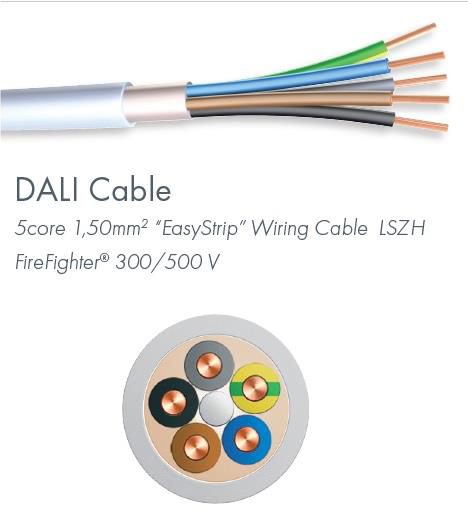
Each component of an open source DALI network is assigned an ‘address’ which a central computer uses to communicate its pre-programmed instructions.
For example, a set of lights can be programmed to come on once the first person enters the office in the morning, switch off when no-one is present in a room or on a floor, brighten or dim throughout the day or cause the actuation of solar blinds in response to the amount of natural light coming from outside.
The possibilities are (almost) limitless, so long as the maximum number of nodes (unique addresses) is limited to 64 in a single network and are based on the programming sequence of sensors and actuators which respond to the set points input into the system at the commissioning stage.
What’s an open source protocol?
DALI is an open source protocol, which means it is a free to use set of rules and standards specific to automatic digital lighting controls. DALI is recognised as an interface lighting standard for digital lighting controls under IEC 60929, which was produced (and standardised) by electronic ballast manufacturers.
The added comfort, energy savings and cost savings provided by DALI systems helps them pay for themselves relatively quickly, particularly in larger offices and communal dwellings like university halls of residence, hospitals or care homes.
Smarter buildings, smarter FM
Smart lighting systems can make life easier for facilities managers. Emergency lighting can be tested without human interaction, so long as the lights have been programmed correctly. Parameters can be set up to automatically test the fittings monthly, six-monthly and annually, as per the requirements of BS EN 5266, and generate electronic reports. These reports can then be held locally on servers, emailed to specific individuals or held in a cloud-based system to provide a robust record of maintenance.
As with any new system, there are risks and challenges that contractors and installers should recognise.
As each ballast has a unique address, fault-finding also becomes an easier process. Fault reports can be automatically generated and narrowed down to easily identify a faulty component. A data-informed decision can then be made to dispatch an engineer to fix the problem – saving time and money in the process.
New challenges
As with any new system, there are risks and challenges that contractors and installers should recognise.
Automatic lighting controls can present a steep learning curve for FMs new to smart systems. DALI is a great first step, owing to its simplicity and ease of installation. Initial programming can also be laborious when first installing a system.
As with any open source protocol, there is an added risk of cyber-attacks. However, this can be mitigated by using closed networks and having robust security measures in place. Engineers should have a strong knowledge of basic programming and security systems before making smart lighting installations a part of their arsenal.
Connecting to HVAC
DALI is specific only to lighting controls, however for combined control of lighting and HVAC (which uses a different open source protocol called BACnet), different protocols can be made to work in concert using a ‘gateway’.
A gateway will translate one protocol, in this case DALI, into one that BACnet can utilise and which can be controlled using one building management system, via one user interface (see diagram below - I/O denotes an input or output device on the network).
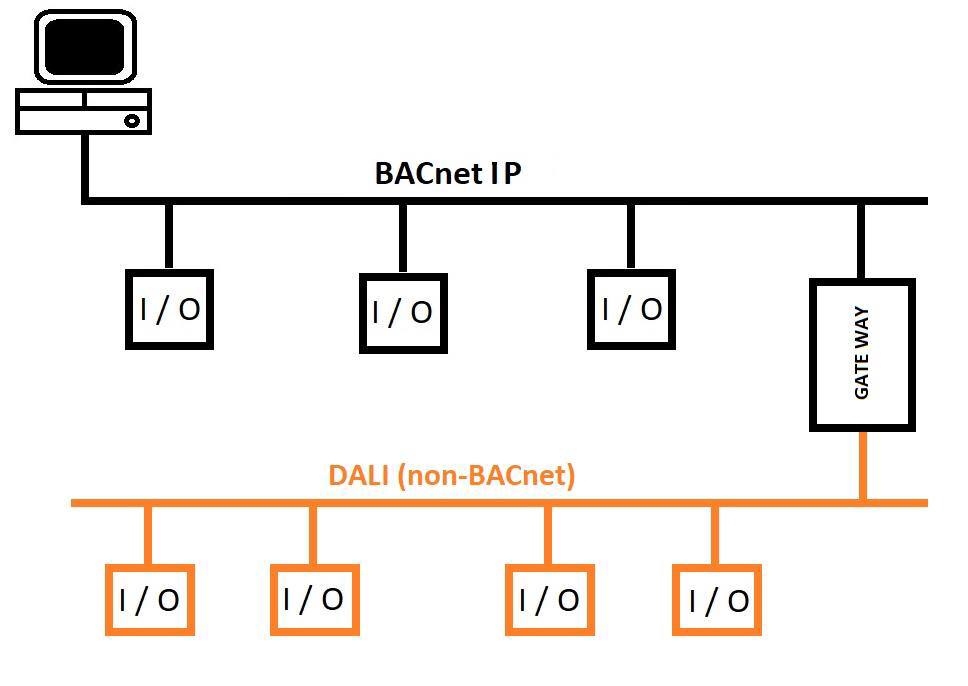
The compromise here is that the speed of data transmission is slowed – though it is still largely adequate for building services applications.
In short, automatic digital lighting controls have been around for a while and are most definitely here to stay.
Although somewhat removed from the world of the electrician, it will become increasingly important for contractors and installers to be aware of HVAC automation systems as demand for these, and for total building automation and control systems, is likely to rise.
Lighting the way
In short, automatic digital lighting controls have been around for a while and are most definitely here to stay.
They make for better-performing, energy efficient buildings and can be tailored to an almost limitless range of user needs. Installers should see this as an opportunity to grow and offer much-needed expertise to FM teams across the country.
To find out more about smart control systems, and how ECA can support building controls and smart building installations, click here.
Are you up to date with ECAtoday?
ECAtoday is the official online magazine of ECA and reaches thousands of people within the electrotechnical and engineering services industry.







